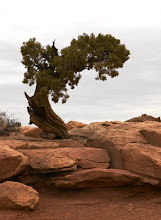Gorillas in the Bamboo~Mt. Tshiaberimu
 As we continue reading The Year of the Gorilla, we have come to see and hear perhaps what Dian Fossey would eventually discover and make famous in her mountain gorilla work within the Virunga Mountains along Rwanda, Uganda and the Congo--a area that about 600 gorillas call home today.
As we continue reading The Year of the Gorilla, we have come to see and hear perhaps what Dian Fossey would eventually discover and make famous in her mountain gorilla work within the Virunga Mountains along Rwanda, Uganda and the Congo--a area that about 600 gorillas call home today. Among other things, we will take up Schaller's journey onto Mt. Tshiaberimu in 1959, a hike George Schaller took alone. Along the great naturalist's way he discovered various sorts of traps used by natives to capture gorillas, elephants, and other monkeys or small animals.
The International Fund for Animal Welfare, which rejects the idea that human and animal interests are separate, identifies threats that still exist for gorillas today:
Mountain gorillas are threatened by habitat loss due to logging for subsistence agriculture and commercial purposes. Logging opens up forests, giving poachers easy access to animals for the bushmeat trade, which may now be more of a threat than habitat loss or degradation.
Young gorillas are also captured for sale to zoos and research institutions. Civil wars in Rwanda and the DRC during the 1990s led to gorilla deaths and loss of habitat. Large numbers of human refugees fled to camps at the edge of Virunga National Park, which led to uncontrolled firewood harvesting and increased poaching in the Park.
The establishment of buffer zones around the parks and appropriate management within them is urgently required to protect the remaining gorillas. Cooperation between countries where mountain gorillas are found is also required. Lack of funds to employ wildlife wardens and the inaccessibility of many of the areas make enforcement almost impossible.
Gorillas are frequently maimed or killed in illegal traps or snares set for other forest animals. Controlled tourism to view habituated groups of mountain gorillas provides much-needed revenue for the Parks and for gorilla protection efforts, including enforcement. Due to civil unrest, visits to Rwanda are not recommended at present, but gorilla groups can be safely accessed from Uganda and the DRC.




